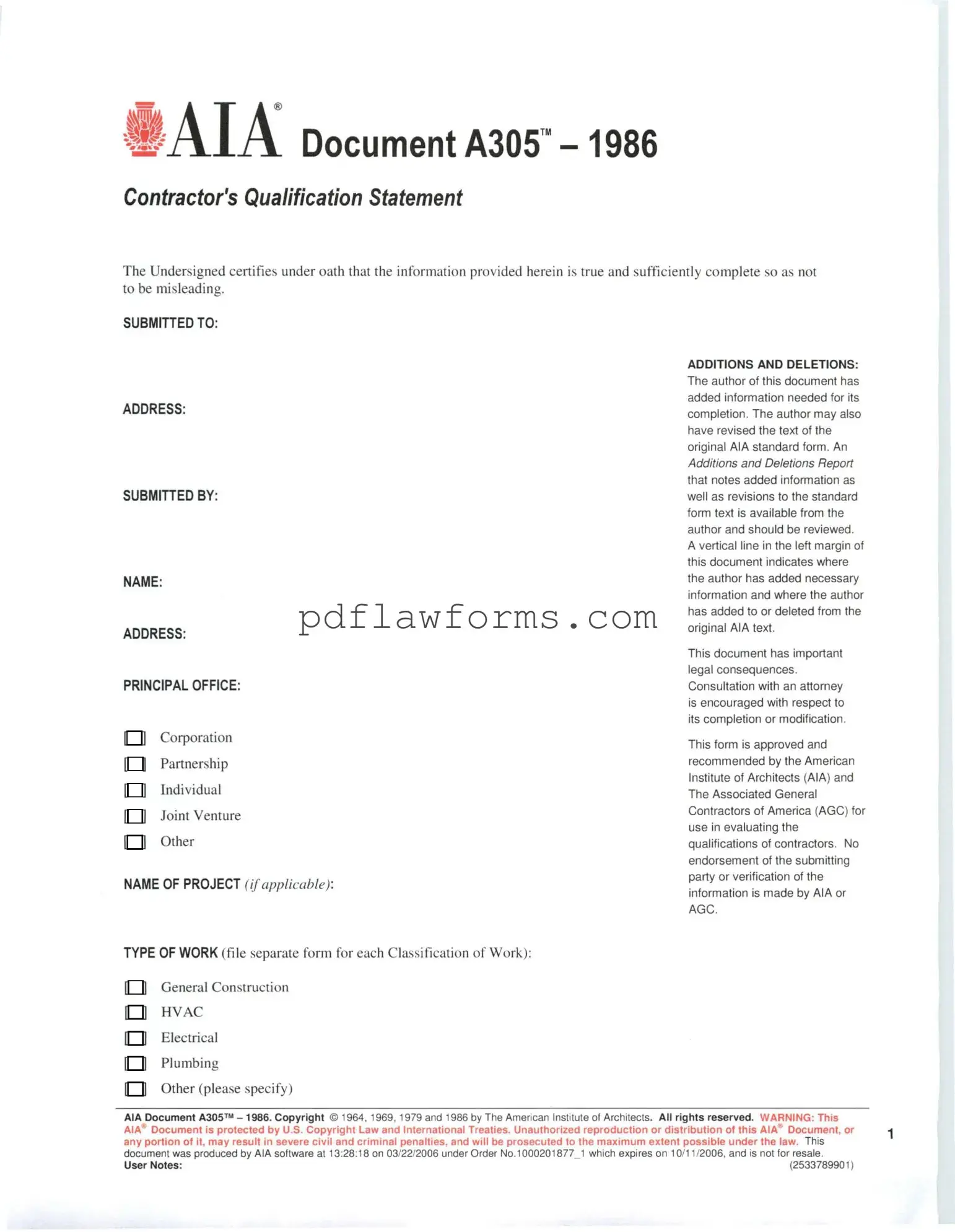Fill Your AIA A305 Template
The AIA A305 form is a standard document used in the construction industry to collect information about a contractor's qualifications. This form helps owners and architects assess a contractor's experience, financial stability, and ability to complete a project successfully. For those looking to streamline their project bidding process, filling out the A305 form is essential; click the button below to get started.
Make My Document Online
